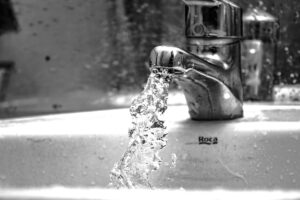Winter can be especially harsh, and one of the most common problems during this season is frozen pipes. When water inside pipes freezes, it expands, which can cause the pipes to crack or burst. This leads to costly repairs and a big mess to clean up. But with a bit of preparation, you can keep your pipes safe and sound.
Knowing why pipes freeze and what you can do to protect them is key. Even simple steps, like insulating pipes and keeping your thermostat steady, make a big difference. Being proactive can save you from a lot of stress and money down the road.
Keeping your plumbing in top shape during the cold months doesn’t take a lot of effort. It’s all about adopting the right habits and taking sensible precautions. By following some easy tips, you can enjoy a worry-free winter and ensure that your pipes stay in perfect working order.
Understand Why Pipes Freeze and the Risks Involved
When winter hits and temperatures drop, our pipes can freeze, leading to a host of issues. Understanding why pipes freeze helps us prevent this problem. Water expands when it freezes. If water inside a pipe freezes, it turns into ice and takes up more space. This increase in pressure can cause the pipe to crack or even burst.
The main reason pipes freeze is exposure to frigid temperatures, particularly when they are not well-insulated. Pipes located in unheated areas like basements, attics, or garages are at a higher risk. Even pipes in exterior walls or under sinks near drafty areas can freeze.
Freezing pipes can lead to:
1. Burst Pipes: When a pipe bursts, it can release gallons of water, causing major flooding and water damage in your home.
2. Loss of Water Supply: Frozen pipes can block the flow of water to your taps, leaving you without access to running water.
3. Costly Repairs: Fixing burst pipes and water damage can be expensive. Repairing a burst pipe involves not only fixing the pipe but also addressing any resulting water damage.
4. Structural Damage: Water from a burst pipe can damage floors, walls, and even the foundation if left unchecked for too long.
Knowing why pipes freeze and the risks involved allows you to take steps to prevent such issues. You can protect your home and save yourself from dealing with expensive repairs or damage later.
Insulate Your Pipes Effectively
Proper insulation is one of the best ways to prevent pipes from freezing. By insulating your pipes, you help keep them warm and safe from icy temperatures. Here’s how you can insulate your pipes:
1. Use Foam Pipe Insulation: Foam pipe sleeves are easy to install and provide a layer of protection. Measure the length of your pipes and cut the foam to fit. Slide it over the pipes to keep them insulated.
2. Apply Heat Tape: For pipes in very cold areas, consider wrapping them with heat tape. This tape uses electricity to keep pipes warm and can be very effective against freezing.
3. Seal Gaps and Cracks: Air leaks can bring cold air into your home, making pipes colder. Be sure to seal any gaps around where pipes enter walls and floors.
4. Cover Outdoor Faucets: Disconnect any garden hoses and cover outdoor faucets with insulated covers. This keeps cold air from entering your home’s plumbing system.
5. Use Pipe-Wrap Insulation: Wrap pipes with insulated wrapping materials. These materials add a thermal barrier and can be found at most hardware stores.
6. Consider Insulated Tape: Wrap joints and bends, especially in areas prone to drafts, with insulated tape to provide extra warmth.
Taking these insulation steps ensures your pipes remain intact and your home water supply stays reliable during the harsh winter months. With the right insulation, you can protect your home from the risks associated with frozen pipes.
Maintain a Consistent Indoor Temperature
Keeping your home at a steady temperature is a smart way to prevent pipes from freezing. Fluctuations in indoor temperatures can lead to cold spots that put pipes at risk. Here’s how you can maintain a consistent temperature:
1. Set Your Thermostat: Keep your thermostat set to at least 18°C (65°F) during cold weather. This temperature helps ensure that areas like basements and attics don’t get too chilly.
2. Leave Cabinet Doors Open: If you have pipes under sinks, leave the cabinet doors open. This allows warm air from the room to circulate around the pipes, reducing the chance of freezing.
3. Use Space Heaters Wisely: In cold parts of the house, like garages or basements, use space heaters to provide extra warmth. Make sure they are safe and have automatic shut-offs.
4. Seal Drafts: Check around windows, doors, and other openings for drafts. Use weather stripping or caulk to seal any gaps, keeping warm air inside your home.
5. Avoid Drastic Temperature Drops: If you lower your thermostat at night, don’t drop it too much. Keeping the change minimal can prevent the pipes from cooling down too rapidly.
6. Monitor HVAC Units: Ensure your heating system is in good working order. Regular maintenance keeps it efficient and helps maintain a stable indoor climate.
With consistent home temperatures, pipes are less likely to freeze. This simple precaution protects your plumbing and saves you from potential headaches.
Use Proactive Measures During Extreme Cold
During especially cold periods, taking proactive steps can provide extra protection for your pipes. By anticipating the impact of freezing temperatures, you can prevent costly damage:
1. Let Faucets Drip: Keep a trickle of water running in a few taps. Moving water through the pipes, even slowly, can prevent freezing.
2. Keep Garage Doors Closed: If you have water supply lines in the garage, keep doors closed to trap heat and protect those pipes from freezing temperatures.
3. Direct Pipes to Warmer Areas: If possible, reroute exposed pipes through warmer parts of your home such as heated basements or interior walls.
4. Install Pipe Heating Cables: These cables wrap around pipes and provide heat. Turn them on when extreme cold is expected for extra protection.
5. Check for Leaks: Inspect for any leaks, as even small amounts of moisture can exacerbate freezing problems by cooling the surrounding pipes faster.
6. Plan Ahead for Vacations: If you’re leaving home during winter, keep your thermostat set to at least 15°C (59°F). Ask a friend or neighbour to check on your home occasionally.
By using these proactive measures in extreme cold, you can prevent pipes from bursting, save on repair costs, and maintain your peace of mind.
Conclusion
Preventing frozen pipes is an essential part of winterizing your home. By understanding the risks, insulating properly, maintaining a stable indoor temperature, and taking proactive measures during extreme cold, you can protect your plumbing system from winter’s harsh grip. These steps ensure that your home remains safe and your water supply uninterrupted.
When the cold weather threatens your pipes, turn to Hayes Plumbing for expert help. We offer comprehensive solutions to deal with frozen pipes and other plumbing issues. Contact us today to learn how we can assist in safeguarding your home against winter damage. With Hayes Plumbing by your side, you can face the winter months with confidence.



